Chef's Corner
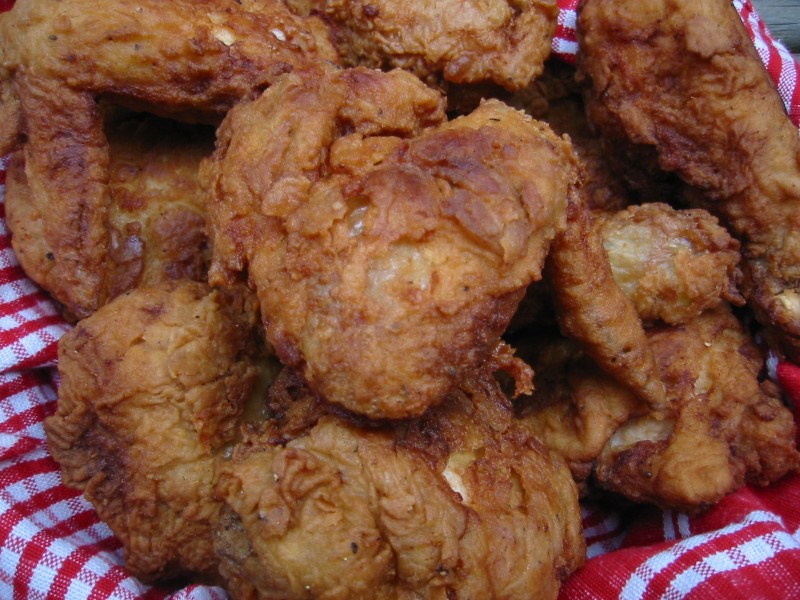 Take it for what it's worth, but this Jersey boy loves southern fried chicken. I’ve learned that it is not only the recipe and ingredients that make a successful fried chicken, but it truly lies within the technique along with the love and passion that is put into it. Down south, fried chicken is a religion, and people swear by their own recipes and family traditions. I am no authority in Southern hospitality, but will help you look deeper into the world of the amazing comfort food… Southern Fried Chicken!
Take it for what it's worth, but this Jersey boy loves southern fried chicken. I’ve learned that it is not only the recipe and ingredients that make a successful fried chicken, but it truly lies within the technique along with the love and passion that is put into it. Down south, fried chicken is a religion, and people swear by their own recipes and family traditions. I am no authority in Southern hospitality, but will help you look deeper into the world of the amazing comfort food… Southern Fried Chicken!Making fried chicken is a LOT of work (at least according to today’s 30 minute meal prep orientation). The preparation of the chicken, the breading of the chicken, the temperature regulation, the actual cooking, the cleanup of the cooker, the kitchen and you, applying first aid to yourself (you cannot fry chicken without getting at least one fat burn, I believe). Also be aware that your kitchen (and your house) will smell of fried food for at least another day. But the work is worth it in the delight of biting into a fresh, warm, crunchy piece of perfectly golden home-fried chicken.
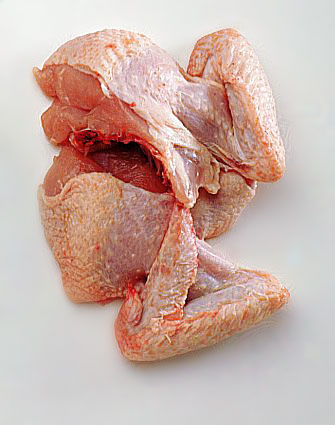 The best size chicken to fry is a 4-pound fryer. Never fry any chicken larger than 5 pounds as it will take the pieces too long to cook. Chickens smaller than 3 pounds are too small for good fried chicken.
The best size chicken to fry is a 4-pound fryer. Never fry any chicken larger than 5 pounds as it will take the pieces too long to cook. Chickens smaller than 3 pounds are too small for good fried chicken.Traditional fried chicken HAS SKIN. Skinless fried chicken is a weird invention of those who think that it makes for a lower-fat chicken (and what are those people doing eating Fried Chicken in the first place!). The skin is necessary to provide the support for the breading, and to add that element of 'crisp' that is the goal of the great chicken fryer. I also think that the skin actually helps keep the chicken meat lower in fat as it serves to shield the meat from the fat.
Follow these steps below to help you along the way:
Marinating: Some say that marinating or soaking the chicken in a brine or buttermilk for 30 mins to a few hours can increase tenderness and develop great flavor profiles.
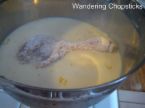 Coating: Apply different coatings and coating techniques. Try dipping the chicken in milk, then flour, then milk, and then the flour again. Some cast-iron cooks dip it in a milk-egg mixture and then dredge it in flour. Some don't use flour at all and cover it with cracker crumbs, potato flakes, or cornmeal.
Coating: Apply different coatings and coating techniques. Try dipping the chicken in milk, then flour, then milk, and then the flour again. Some cast-iron cooks dip it in a milk-egg mixture and then dredge it in flour. Some don't use flour at all and cover it with cracker crumbs, potato flakes, or cornmeal.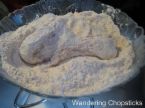 After you coat your chicken, let it air-dry. Air-drying your chicken for 20 minutes to a half hour after it has been coated lets the coating firm up and produces a crispier crust.
After you coat your chicken, let it air-dry. Air-drying your chicken for 20 minutes to a half hour after it has been coated lets the coating firm up and produces a crispier crust.Seasoning: Use plain old salt and pepper or create special seasoning mixes. You may want to season the flour that you dredge the chicken through; you can also season the chicken itself. Some people swear that paprika enhances the flavor; others claim it's just there for color.
Cooking: The real secret to the ultimate in comfort food, Southern Fried Chicken, isn't in the recipe; it's in the cooking. Properly pan-fried chicken is tender and moist (not greasy) on the inside and golden brown and crispy on the outside. Keep your oil very hot. To make sure that your chicken doesn't get greasy, you want the oil hot enough (375 degrees Fahrenheit) that the water in the chicken stays above the boiling point during frying. The force of the steam leaving the chicken keeps the oil from being absorbed. The hot oil also makes the outside wonderfully crispy. Some tips for keeping the oil at the temperature you want are as follows:
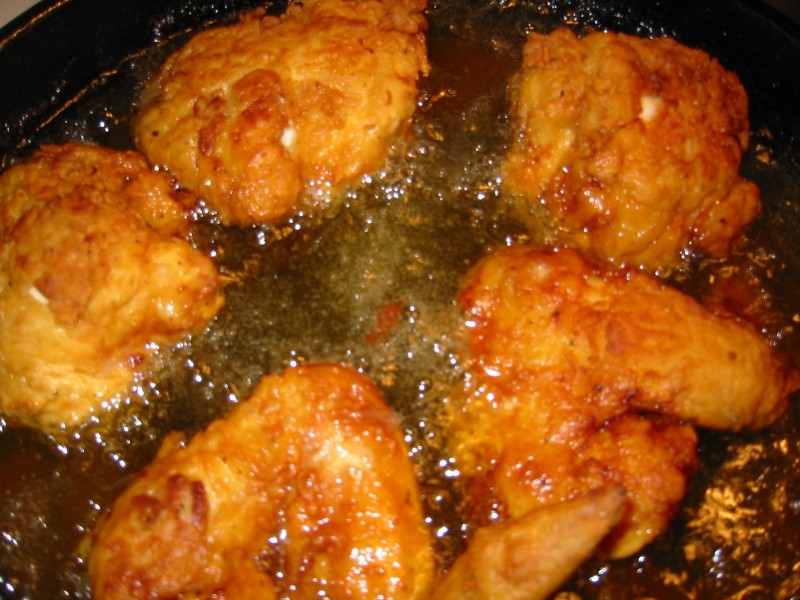 *Use peanut oil, which has a hotter smoking point than vegetable oils or shortenings.
*Use peanut oil, which has a hotter smoking point than vegetable oils or shortenings.*Allow the chicken to come almost to room temperature before you cook it so that when you put it into the hot oil, it doesn't reduce the oil temperature as much as really cold chicken would.
*Don't overcrowd the chicken in the pan. Putting too many pieces in the pan causes the temperature to drop and takes it longer to heat up again.
 *Use a deep-sided cast-iron skillet or Dutch oven and an iron cover. Cast iron is the cook's best friend when pan-frying. It absorbs heat evenly, eliminating hot spots, and its ability to retain heat keeps the temperature of the oil as even as possible.
*Use a deep-sided cast-iron skillet or Dutch oven and an iron cover. Cast iron is the cook's best friend when pan-frying. It absorbs heat evenly, eliminating hot spots, and its ability to retain heat keeps the temperature of the oil as even as possible.*Brown the chicken quickly to seal in the juices. After the initial browning, reduce the heat to allow the chicken to cook through without drying. Then return the heat to medium-high to re-crisp it before you remove it from the pan.
*Use tongs to turn and move the chicken. Tongs won't pierce the chicken and let the juice escape.
 *Drain fried chicken on a paper towel and then place it on a metal wire cooling rack in a warm oven. This simple step keeps your cooked chicken crisp and warm. After all, what good is a crispier crust if it just gets soggy and cold while sitting in a puddle of oil?
*Drain fried chicken on a paper towel and then place it on a metal wire cooling rack in a warm oven. This simple step keeps your cooked chicken crisp and warm. After all, what good is a crispier crust if it just gets soggy and cold while sitting in a puddle of oil?Serving: Make sure its crisp, hot, and you have a napkin handy! It's common to serve fried chicken with a creamy gravy, or a kicked up hot sauce. Whatever your pleasure, be sure that the love and effort you put into the preparation carries through to the plate.
Good Luck and Good Eating!
Chef Brian


